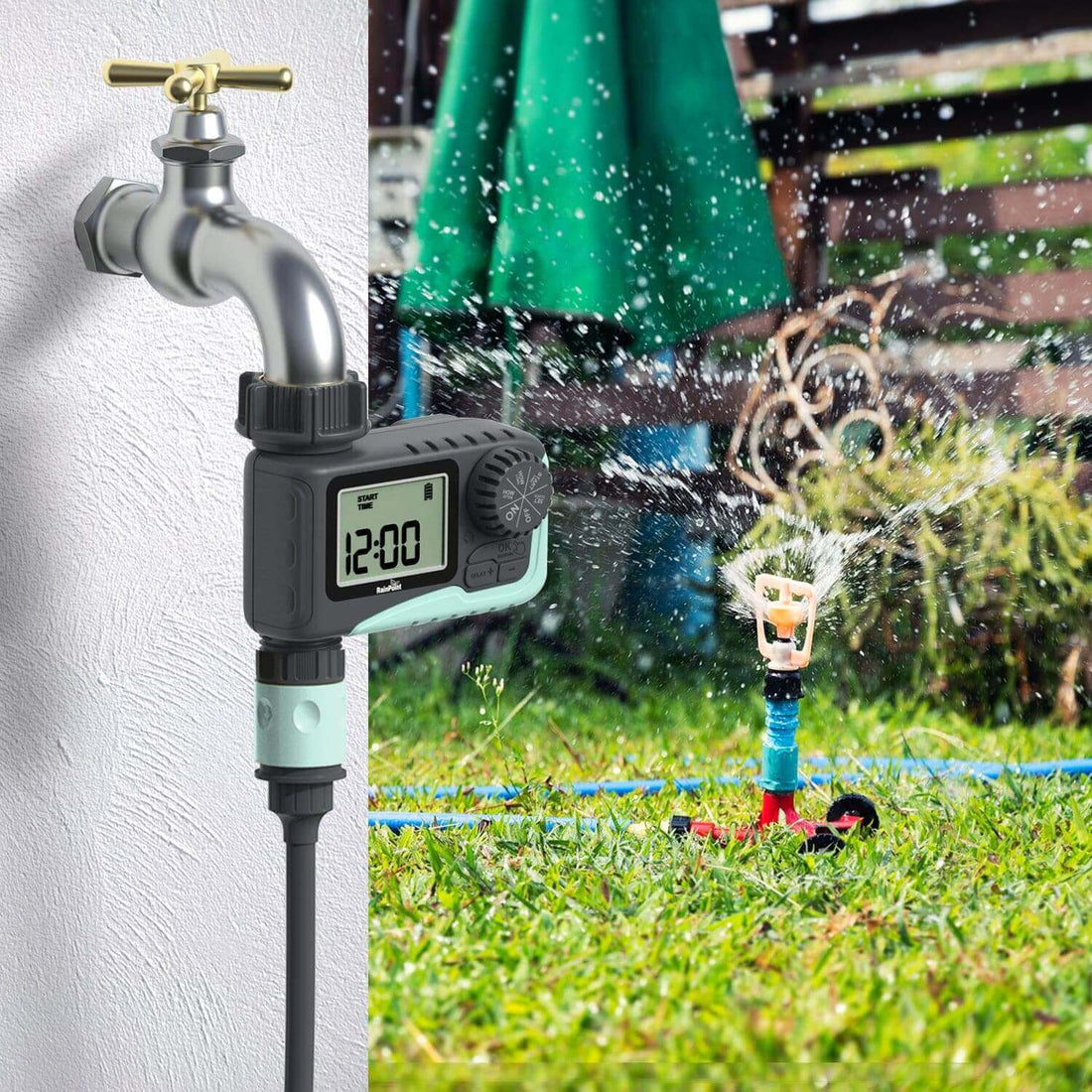
Maintaining a lush, green garden or lawn requires regular watering, but finding the time to do it manually can be a challenge. Enter the sprinkler timer – a game-changing tool that ensures your garden gets the precise amount of water it needs, without requiring constant attention. In this guide, we'll explore the benefits of using a sprinkler timer, the different types available, and tips for choosing the right one for your needs.
Why Use a Sprinkler Timer?
A sprinkler timer is a device that automates the watering process by scheduling when and how long your sprinklers run. This automation offers several key benefits:
- Consistency: Regular watering is crucial for a healthy garden. A sprinkler timer ensures that your garden receives a consistent amount of water, reducing the risk of over- or under-watering.
- Convenience: With a timer, you can set your watering schedule once and let the device handle the rest. This frees up your time for other activities and reduces the hassle of manual watering.
- Water Conservation: Properly timed watering helps conserve water by minimizing wastage. Timers can be programmed to water early in the morning or late in the evening when evaporation rates are lower, making your watering more efficient.
- Cost Savings: By optimizing your watering schedule, a sprinkler timer can help reduce your water bill. Efficient watering minimizes the need for excessive water use and helps avoid costly mistakes like forgetting to turn off your sprinklers.
Types of Sprinkler Timers
Sprinkler timers come in various types, each with its own features and benefits. Understanding these options will help you choose the right timer for your garden:
- Mechanical Timers: These are simple, analog timers that use a dial or dial-and-push mechanism to set watering schedules. Mechanical timers are often less expensive but may lack advanced features.
- Digital Timers: Digital timers offer greater flexibility with programmable schedules. They usually come with LCD screens, allowing you to set precise start times, durations, and frequencies. Some digital timers also include rain delay settings to prevent watering during rainy periods.
- Smart Timers: The latest advancement in sprinkler technology, smart timers connect to your home Wi-Fi network and can be controlled via smartphone apps. These timers can integrate with weather forecasts to adjust watering schedules based on current conditions, further enhancing water efficiency.
- Two-Channel and Multi-Channel Timers: If you have multiple zones or areas that need different watering schedules, consider a multi-channel timer. These timers can manage several zones independently, allowing for customized watering across your garden.
Choosing the Right Sprinkler Timer
When selecting a sprinkler timer, consider the following factors:
- Garden Size: For larger gardens, a multi-channel timer might be necessary to manage different zones effectively. Smaller gardens might only require a simple mechanical or digital timer.
- Watering Needs: Evaluate your garden’s watering requirements, including the type of plants and soil. A timer with customizable settings will help you tailor the watering schedule to your garden’s specific needs.
- Ease of Use: Look for a timer that is user-friendly, with clear instructions and an intuitive interface. Digital and smart timers often offer more features but may have a steeper learning curve.
- Budget: Timers vary widely in price, so choose one that fits your budget while meeting your needs. Mechanical timers are the most affordable, while smart timers offer advanced features at a higher price point.
Conclusion
A sprinkler timer is an invaluable tool for any garden enthusiast. By automating your watering schedule, you can ensure a healthy, vibrant garden while saving time, conserving water, and reducing costs. Whether you opt for a simple mechanical timer or a sophisticated smart model, investing in a sprinkler timer will make your gardening experience more efficient and enjoyable.